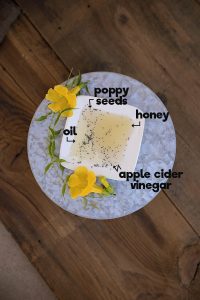SAVE THE BEES
Save the Bees
Rescue VS Removal (Kill)
I remember first learning about saving bees. Why on earth would one want to do that? Saving these swarming, stinging, pests—seems much too involved, and too much trouble. I mean yeah they make honey, but they’re out in the yard, dive-bombing the pool, inside the wall of a house. They’re going after the kids and the pets. The weather is perfect but the husband won’t go outside to barbecue. We read about bee attacks, see news reports about people killed or very nearly killed by aggressive Africanized bees. Research collected by ASU states that 90% of the Bees in Arizona are Africanized and aggressive. So, what are we to do?
Call the exterminator.
There is a better way
Save The Bees. Okay, we’ve heard this too. Blah, blah, blah, pollination. The truth is if you look down at a plate of food filled with yummy fruits and vegetables and that juicy portion of chicken or beef (can you say apple pie) it is because bees pollinated the vegetation directly for us, or the foods that animals eat. In fact, here is an extensive list of foods that bees pollinate.
Tree fruits such as apples, peaches, apricots, plums, lemons, limes and cherries
Bananas, melons, mangos and papaya
Berries such as strawberries, blueberries, elderberries, blackberries, raspberries and cranberries
Onions
Almonds, cashews and coconut
Avocados
Beans varieties such as green beans, adzuki, kidney and lima beans
Coffee
Tea plants
Vanilla
Sunflower and sesame oils
Tomatoes
Cucumbers
Grapes (and, therefore, wine!)
Cauliflower, cabbage, broccoli, turnips and Brussels sprouts
Beetroot, pumpkin
CHOCOLATE
Sugarcane
Agave
Let’s not forget about the soft, creamy, sweet taste of honey.
Removal or Rescue
Okay, not every bee gets saved. Sometimes it is just too dangerous for an expert to keep everyone out of harm’s way. The process calls for nothing less than what a professional does. When it is safe, rescuing bees is the right thing. Performing this service one must learn all aspects of rescue and relocation, especially what to do with an Africanized colony or a swarm of bees. At Luckey Bee, we are equipped and happy to Bee part of the solution.
Long Live the Queen Bee
One of the coolest things I personally have experienced is requeening. This happens after the bees are taken to a safe new home. The queen controls the hive and its offspring, so the Africanized queen must go. Sorry, bye, bye.
The cool part. Rescued bees are then introduced to a new queen. Most likely the Italian honeybee, which is less aggressive and not as prone to disease. At first, the Africanized bees don’t like her, but she is in a little cage, protected. The tiny cage has a candy cork (yum). This is where the queen lives until the hive accepts her. It takes her about a week to eat through the cork before she makes her way into the hive. This gives the bees enough time to adapt to her new pheromones. When she emerges, the colony is used to her and she will begin laying eggs. No other bee lives as long as the queen does. The old bees die, and the new bees are the offspring of the queen. The hive transforms, thrives, and becomes less aggressive and more easily managed.
Sources
Trisha Hendricks and 12 News, KPNX http://www.12news.com/news/local/valley/1-hospitalized-in-north-phoenix-bee-attack-5-others-stung/425484376
Arizona State University https://cals.arizona.edu/urbanipm/buglist/bees.pdf
Natural Resources Defense Council https://www.nrdc.org/sites/default/files/bees.pdf
One Million Women http://www.1millionwomen.com.au/blog/foods-we-would-lose-if-pollinators-werent-around/



What a great article.